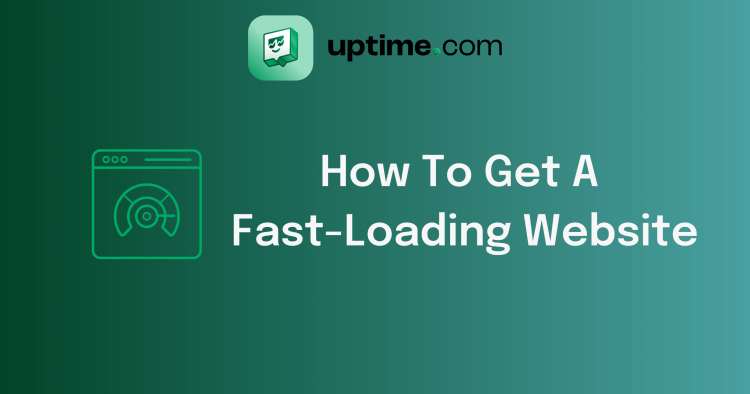
Want a Fast-Loading Website? Here’s How to Make It Happen
In 2021, Vodafone launched a strategy to improve its sales through landing page A/B testing. Both pages looked and functioned identically, but one was optimized for page speed. The optimized page, which had a 31% better Largest Contentful Paint (LCP) than the other, scored 8% higher in sales.
These results echoed findings by Propellernet the previous year. They discovered that mobile sites with faster-than-average total load times were 34% more likely to convert. Additionally, a faster-than-average First Contentful Paint (FCP) improved conversion likelihood by 32%, while a quicker LCP increased it by 27%.
Countless examples repeatedly prove how much site speed matters, but understanding the importance is just the first step.
Now, you need to know how to get the job done with these actionable fixes for boosting your performance metrics.
1. Enable Browser Caching
If you don’t already have browser caching enabled, your users’ browsers must re-download static files like images and scripts to their devices instead of storing them locally for quicker load times. This small change can reduce the data transfer and server load, resulting in much-improved site speeds.
You can adjust the cache duration to choose how long browsers store the files, so it’s helpful to monitor metrics like the average length between repeat visits to optimize that number for your specific users. This ensures returning visitors experience faster load times while keeping your content up-to-date.
2. Compress and Optimize Images
Images make up far more of a web page’s total size than text does, accounting for around 51% of the bytes loaded on the median site. Failing to compress and optimize images adds crucial seconds to the load time, which could determine whether users bounce or convert.
The results will depend on the image type. Still, a good rule of thumb is that lossy compression can significantly scale down JPEGs, often achieving ratios around 10:1. Lossless compression for PNGs and GIFs typically nets around 40% compression.
Finally, don’t forget to resize your images to the appropriate dimensions for your site. Serving images at 2,400 pixels when your site only needs 1,200 pixels wastes bandwidth and slows down loading times.
3. Set Up Lazy Loading
Instead of making users wait for all elements on the page to load, you can use the loading= “lazy” attribute to boost the speed on the elements visible on page launch by telling the browser to hold off on elements further down the page until they’re about to come into view.
It’s an easy method for giving you an edge on those initial load times because it prioritizes the content that matters most without impacting the user experience.
4. Upgrade Your Hosting Service
If you’ve optimized your site to the utmost and you’re still experiencing slow load times, it’s time to consider upgrading your hosting plan. This is particularly relevant if you chose a cost-effective shared hosting plan when your site launched,\ but your assets and audience have grown.
Instead of continuing to split resources with multiple sites, consider either a virtual private server (VPS) or a dedicated server. The former is an excellent middle ground because the third-party hosting service guarantees exclusive access to a compartmentalized share of the physical server. Dedicated hosting gives you an entire server but is the most expensive option.
If you fall somewhere in the middle, always size up. You’ll get your ROI through faster site speeds and increased conversions.
5. Clean Up JavaScript
Letting large, unoptimized JavaScript files and unneeded third-party scripts linger around can also cause your site speed to lag because it still has to load regardless of its usefulness.
There are a few ways you can approach JavaScript cleanup:
- Use tools like Chrome DevTools to identify unnecessary or redundant code and pinpoint which scripts take the longest to load.
- Minify JavaScript files by removing whitespace, comments, and semicolons to reduce the number of lines of code without affecting the functionality.
- Defer non-critical JavaScript so it loads after the main content, and your site becomes interactive faster.
- Switch from the default synchronous loading to asynchronous loading. Synchronous loading means that browsers render everything from top to bottom, which means the head goes first. The issue with that is external resources load from the head, so the rest of the page stays blank until it pulls all of those scripts. Asynchronous loading vetoes that rule so multiple elements can load simultaneously, and users see page content faster.
6. Set Yourself Up for Success With Uptime.com’s Performance Monitoring Tools
Before making site speed improvements, you need to get your site speed metric benchmarks. Otherwise, you’ll be flying blind when it comes time to compare data to see which fixes are working and your return on investment (ROI) for those improvements.
Rather than complicating things by mixing and matching tools, let Uptime.com handle the job. We offer everything you need for unified availability monitoring in customizable dashboards that provide continuous insights into key speed metrics.
Minute-by-minute Uptime checks.
Start your 14-day free trial with no credit card required at Uptime.com.
 Uptime.com Blog
Uptime.com Blog


